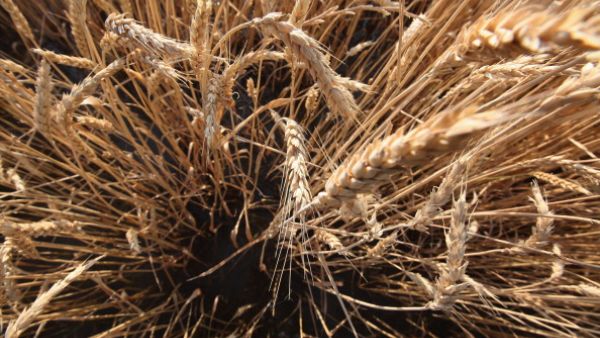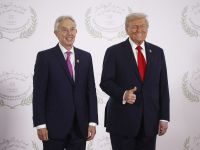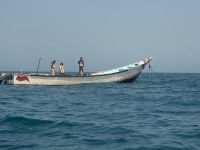Global stock markets rose by 1.5 per cent since the beginning of the year and by 0.8 per cent in the last month in spite of the annexation of Crimea by Russia and the increasing likelihood of some sort of military conflict in the region. Furthermore, even though Russia is the second-largest exporter of oil in the world, Brent oil prices decreased by 4.6 per cent in the first three months of the year, most of it in the last month. However, the deterioration of the political situation in Ukraine did have some impact in international markets in the form of rising prices of agricultural commodities. Ukraine is the origin of 16 per cent of global exports of corn, the third-largest exporter in the world, and nine per cent of global exports of wheat, making it the sixth-largest exporter. Fearing a disruption in Ukraine’s exports, corn prices rose 20 per cent year-to-date, while wheat prices increased by 13.5 per cent.
These developments are relevant to Gulf countries because the region is among the most vulnerable in the world in terms of food dependency. Due to its harsh climate conditions, the region has historically imported almost the totality of the food needed by its population. According to a World Bank report on food prices in the Arab world, GCC countries import on average 90 per cent of their food consumption. Qatar leads the dependency ranking, with 97 per cent of its food being imported, while Bahrain imports 92 per cent, Kuwait 91 per cent, and the UAE and Oman 89 per cent. Saudi Arabia is the most self-sufficient country as it produces 20 per cent of its consumption domestically. However, in the coming years, the level of self-sufficiency will probably go down, not up. A report about food security in the GCC published in 2013 by Chatham House found that the cost of wheat production subsidies in Saudi Arabia had exceeded $5 billion per year in the period between 1984 and 2000. Poor soil endowments, water scarcity and adverse weather resulted in production costs four times higher than international prices. At some point, in 1992, Saudi Arabia had become the sixth-largest wheat exporter in the world. But the rapidity with which farmers were depleting water resources forced Saudi authorities to abandon the policy of increasing domestic production. As a result of the decrease in government support, production started to decrease in 2008 and is expected to stop completely by 2016. Saudi Arabia is not the only example in the region. Several countries pursued similar programmes in parallel to their industrialisation and diversification plans, in an effort to reduce the vulnerability of their economies to changes in the food and oil prices. The UAE has been very active in this field since the 1970s and Qatar is still hoping to reduce its dependency to 70 per cent by 2023 by using new green technology to desalinate water and grow plants without soil. The reality is that these plans are unlikely to reduce the necessity of constant and massive imports of food. But, in spite of recent technological developments, water remains a scarce resource. Agriculture absorbs close to 90 per cent of total water use in the region. Developing a sustainable agricultural sector is expensive and inefficient and, following Saudi Arabia’s example, the GCC countries will have to look for alternatives to increase food security.
The most obvious alternatives are the accumulation of food stocks and the acquisition of agricultural resources outside the region. The latter saw a massive increase in interest from GCC countries following the 2008 food crisis. Africa, and more specifically Sudan, has traditionally been the focus of interest for Gulf’s institutional and private investors. According to the non-profit organisation Grain, GCC investors bought more than two million hectares in Sudan between 2006 and 2012, approximately three times the area bought in the second country of the ranking, Australia. In spite of being a key provider of food, Asia has received little attention from the Gulf to date. China and India are the source of 22 per cent of coarse grains, 30 per cent of wheat and 46 per cent of rice imports in the GCC, according to the FAO. Yet neither India nor China appear among the top 15 countries where the GCC is investing in agricultural resources.
Unlike the rest of the countries in the Middle East and North Africa, GCC countries are enjoying a fiscal surplus equivalent to 10 per cent of GDP on average. Given the comfortable fiscal situation of the Gulf countries and the complicated local conditions, it is reasonable to expect further purchases of agricultural businesses across the world. Gulf investors have usually chosen investing in American and European assets, but the 2008 crisis made evident that geographic and sector diversification should be a priority in the region. The recent price increases in food commodities have put the regional structural dependency on the spotlight again and it will revive institutional interest in these investments.
Francisco Quintana
The writer is a senior economist at Asiya Investments, an investment firm specialising in emerging Asia investments.








